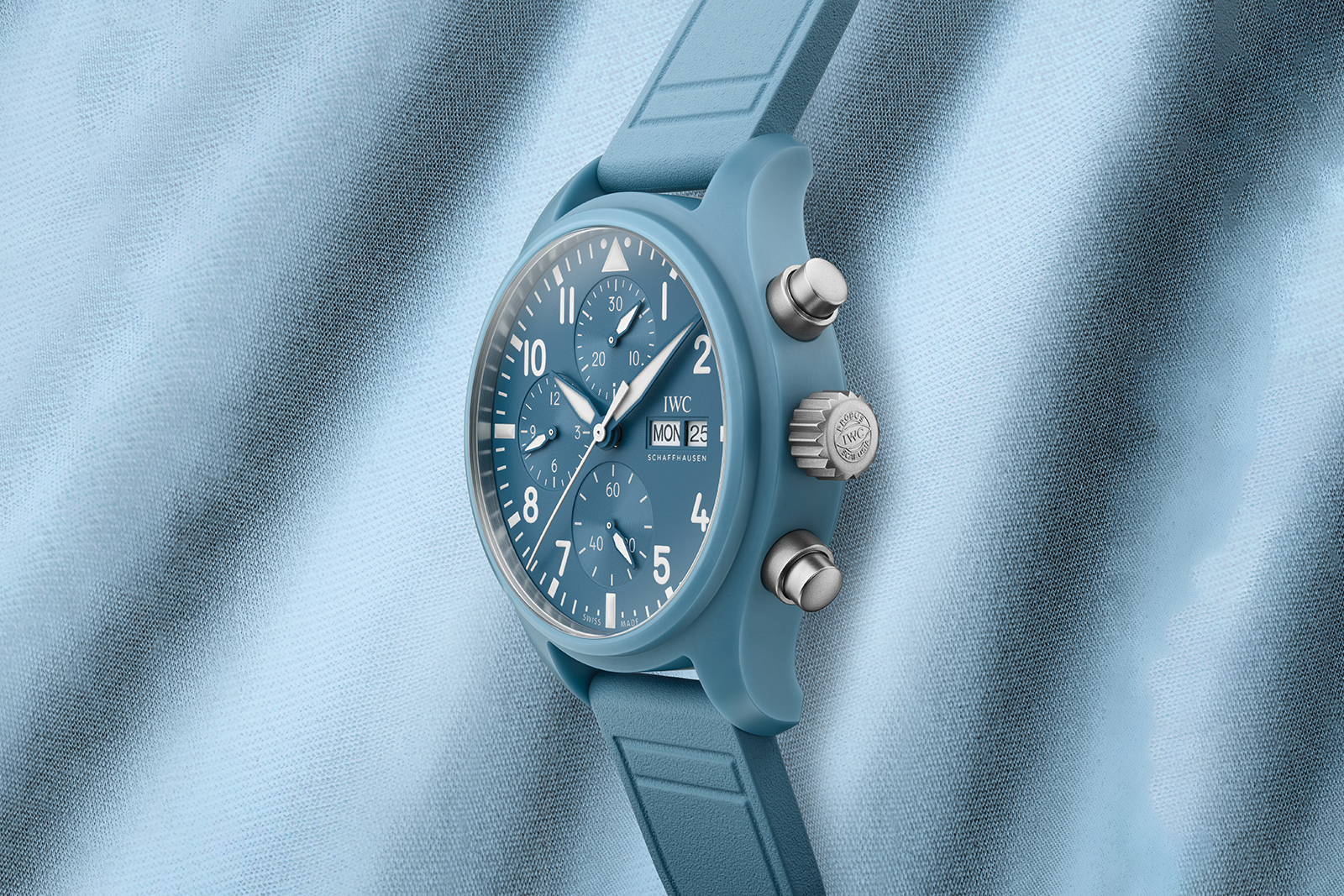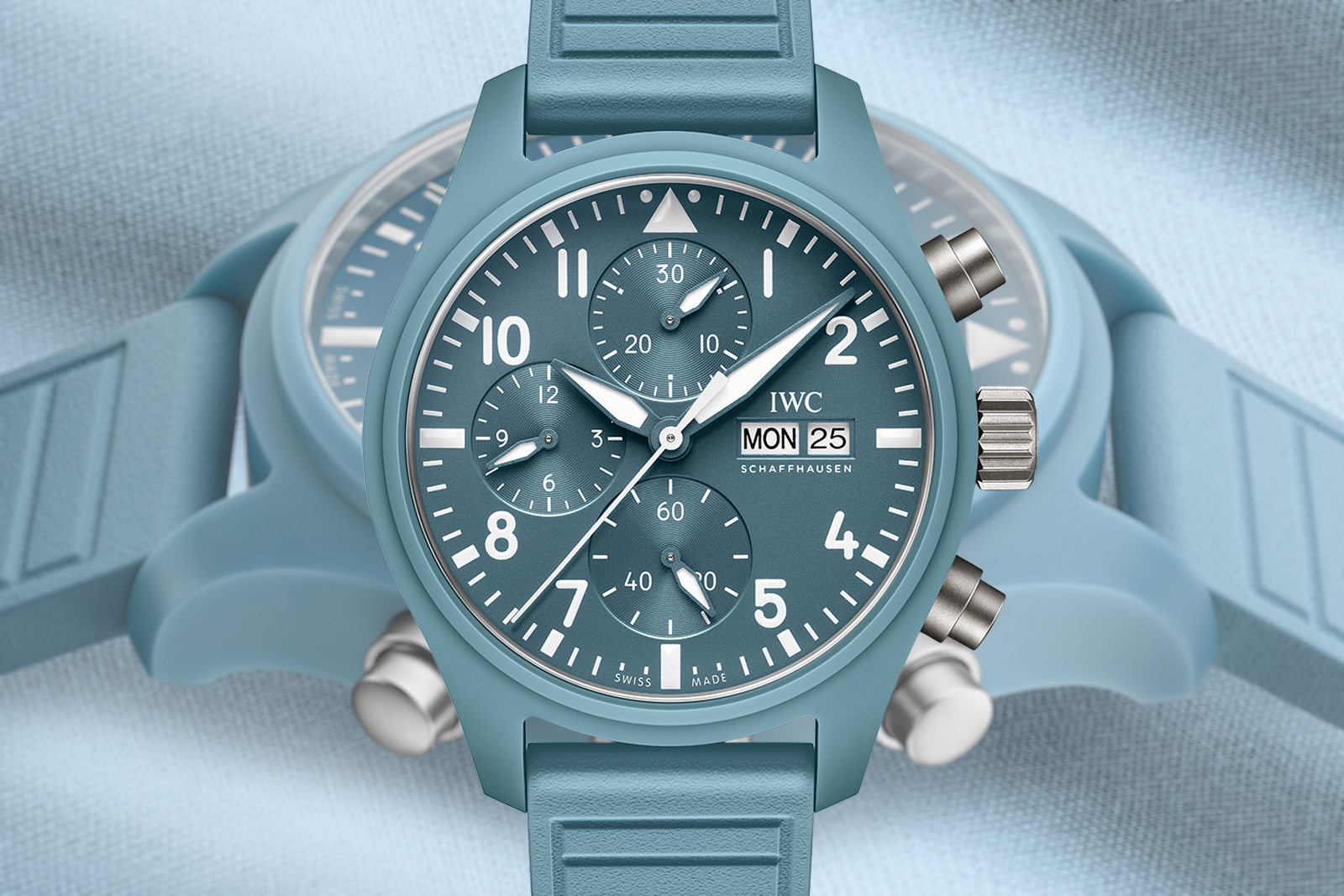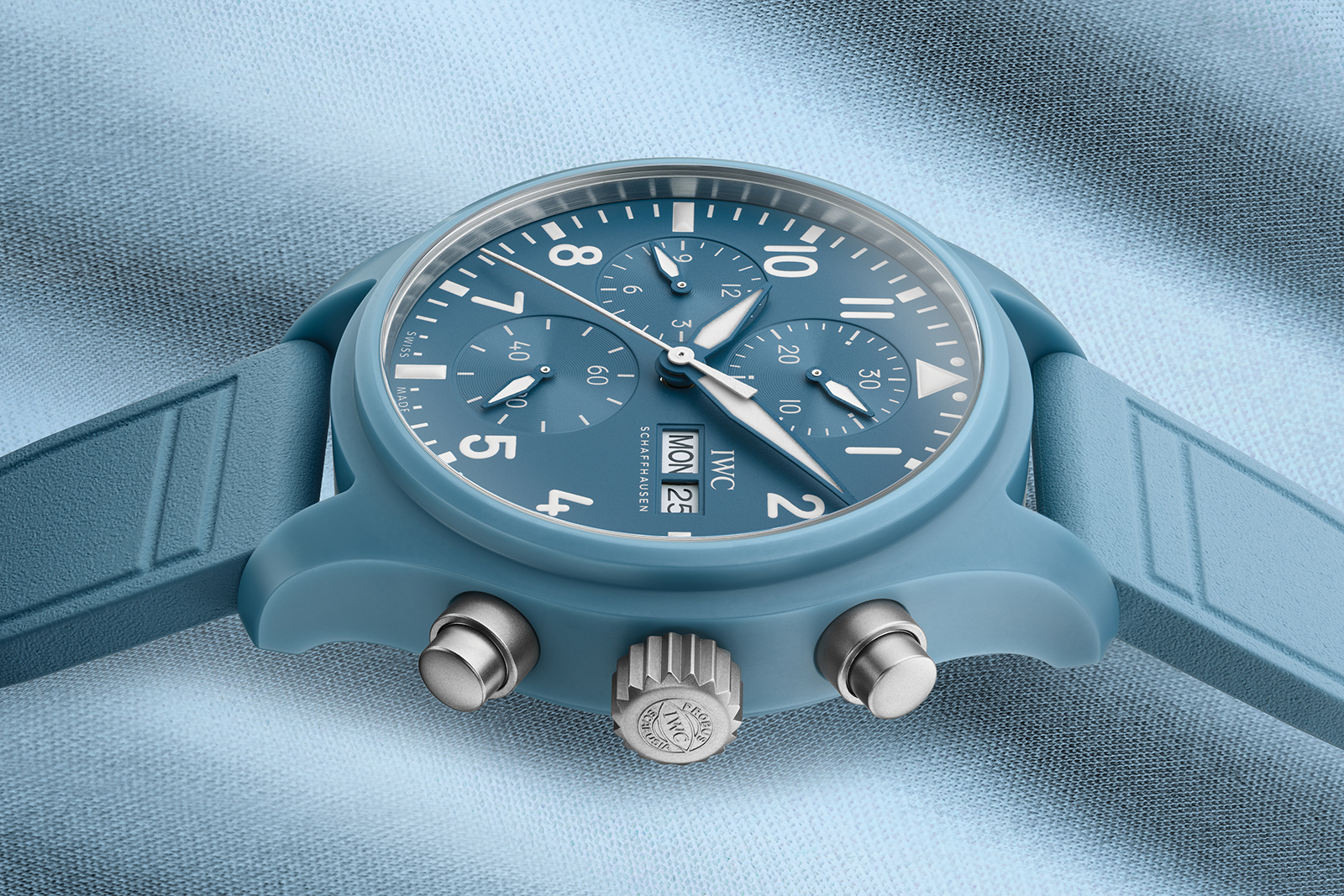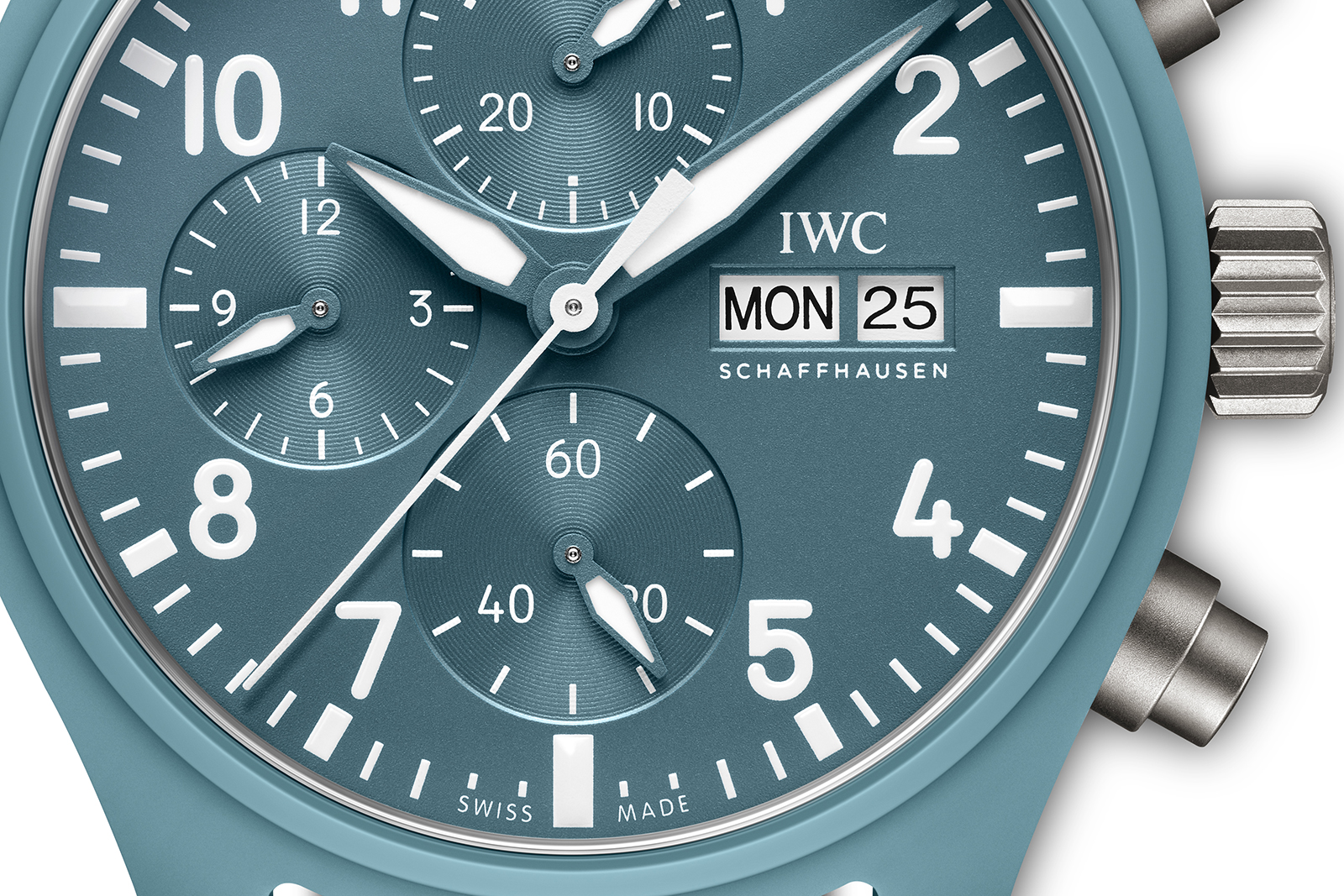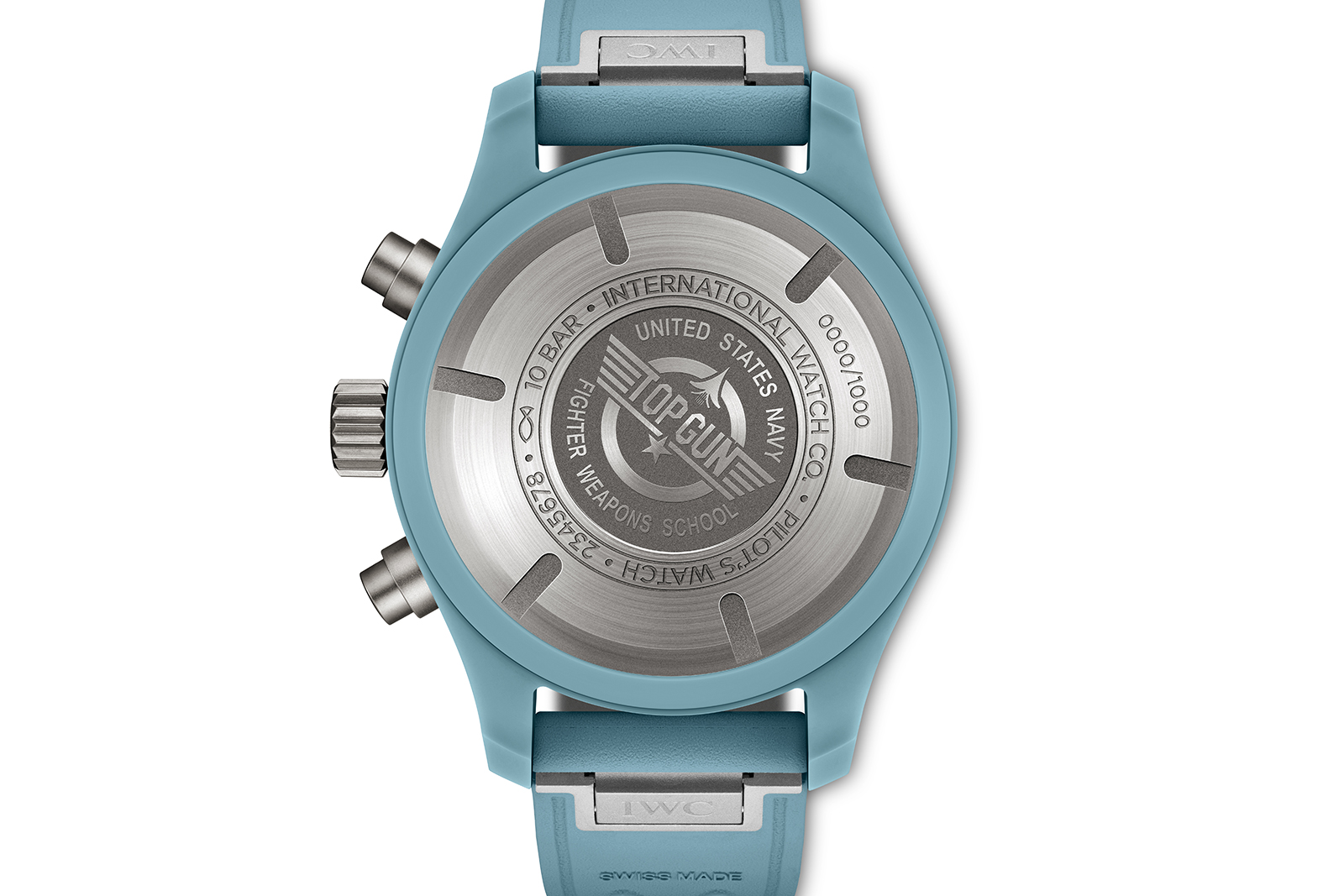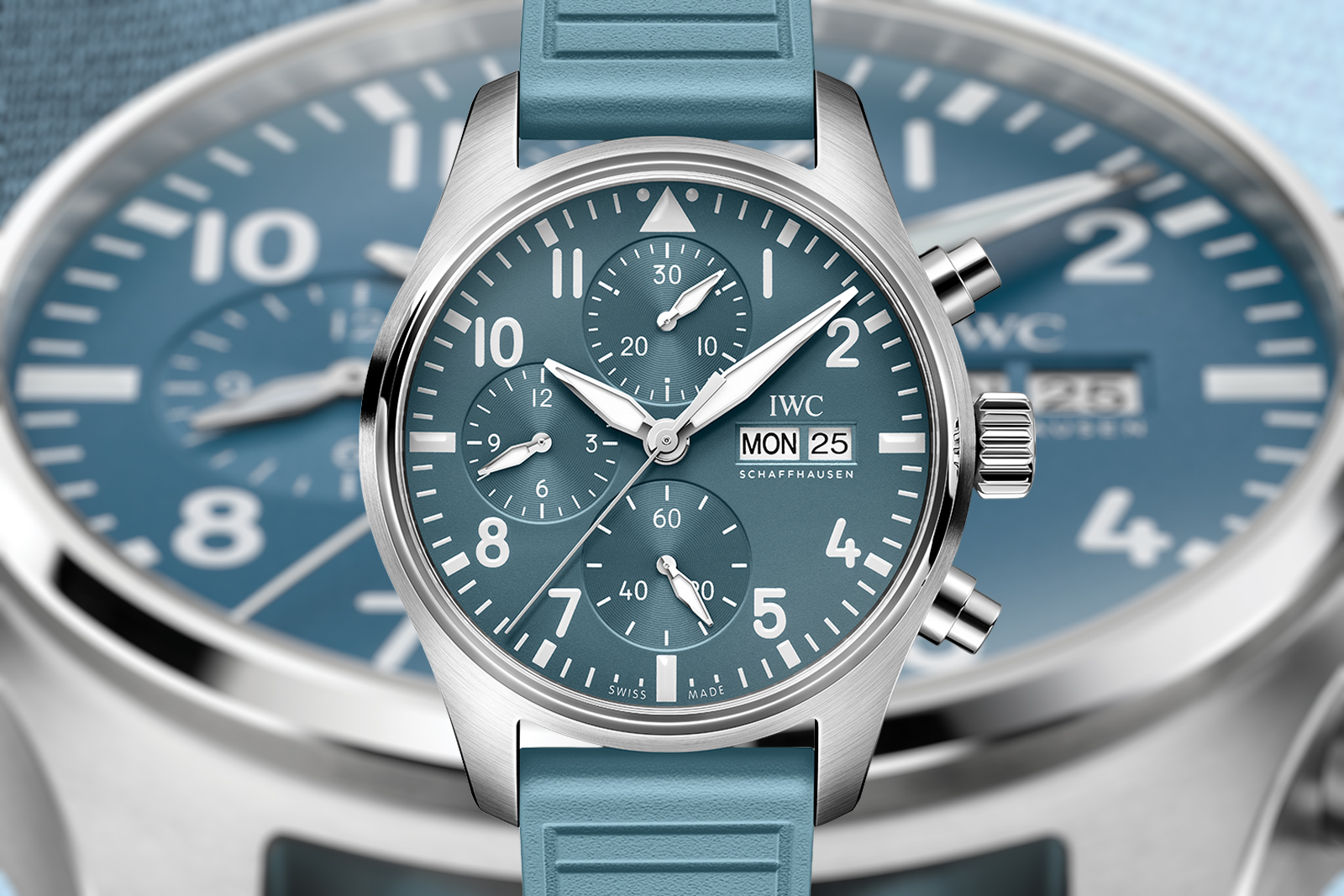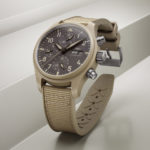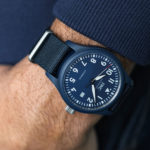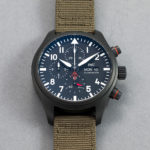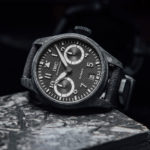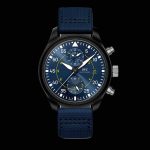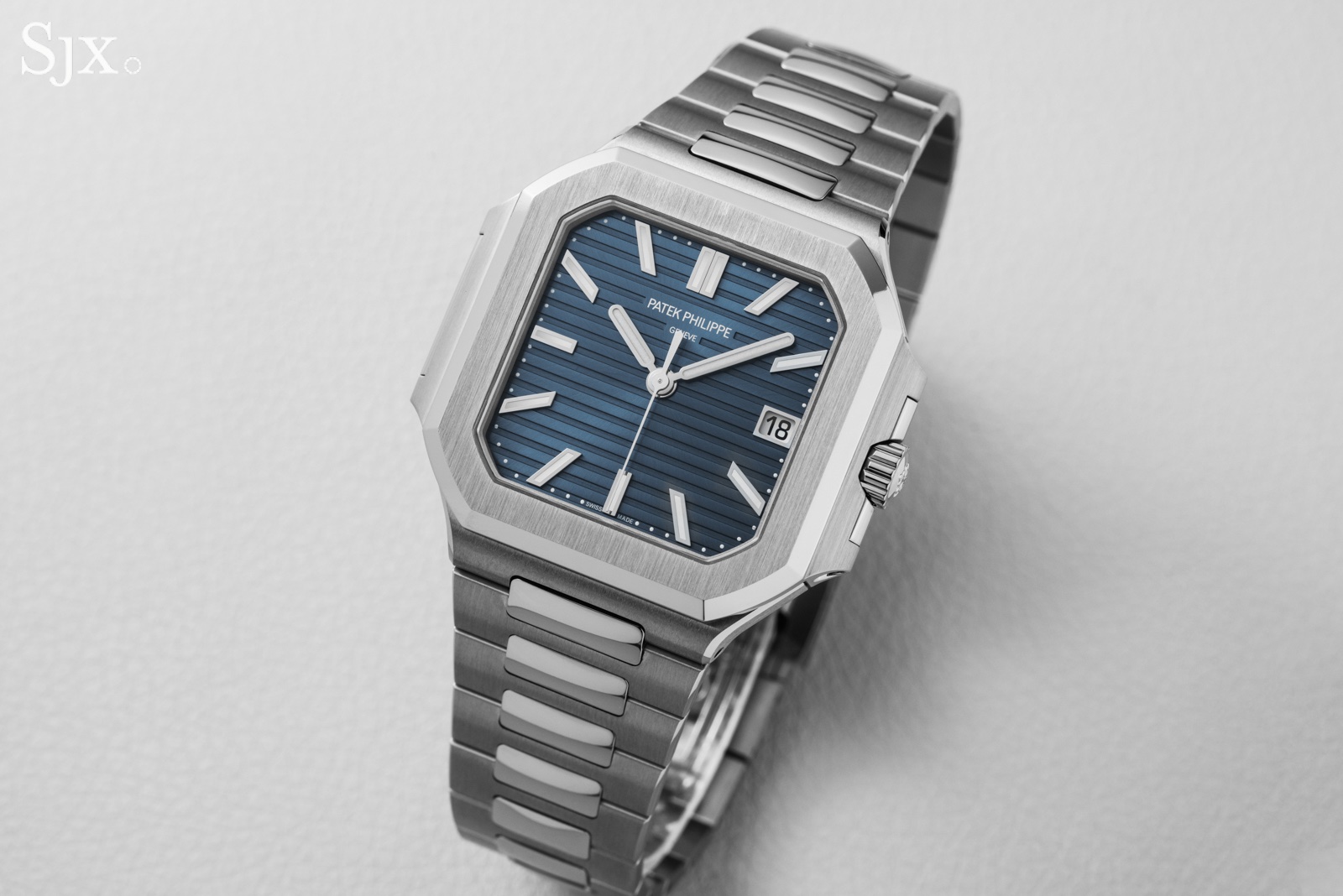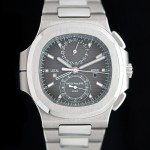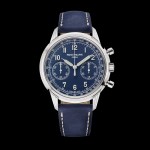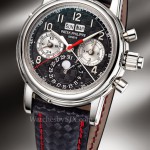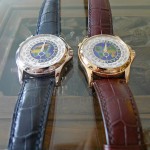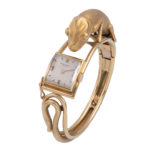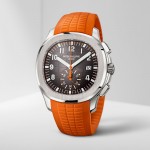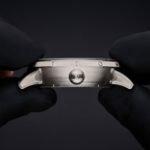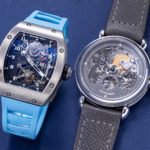The polarising Cubitus collection is not yet a year old, but Patek Philippe’s newest line of elegant sports watches has expanded in a big way with the Cubitus ref. 7128/1G-001 in a new ‘medium’ 40 mm size that transforms the wearing experience for the better. With summer now in full swing, it’s worth looking at this new Cubitus and considering what it means for the future of the collection.
Featuring a silky 18k white gold case and bracelet, the smaller Cubitus practically drapes itself on the wrist, and is probably the most compelling launch yet from the new collection. Also available in rose gold (ref. 7128/1R-001), the new “medium” Cubitus is a luxury sports watch in the true sense of the term, combining everyday comfort and wearability with premium materials and high-quality finishing inside and out.
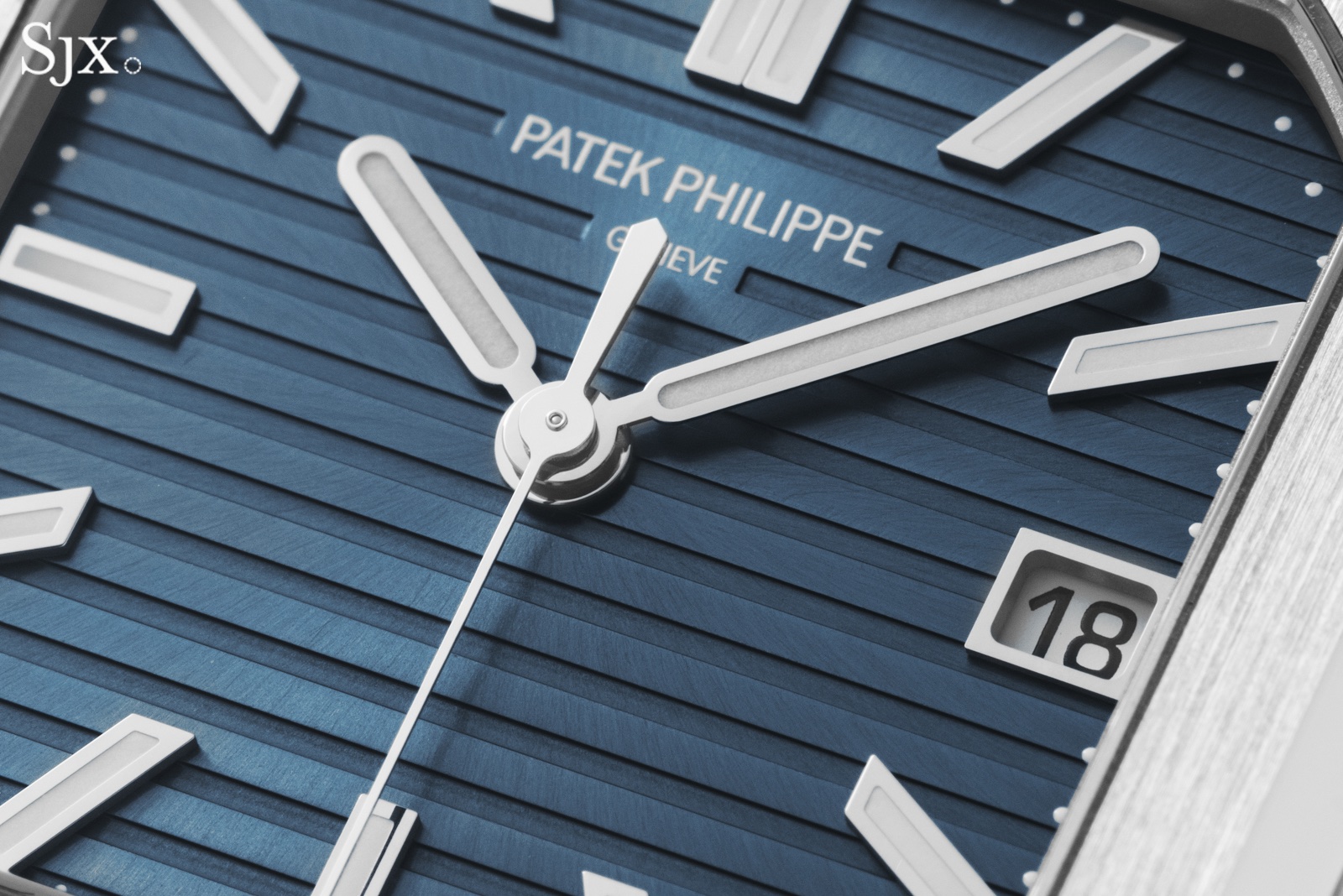
For better or worse, the Cubitus retains several signature elements of the Nautilus such as the embossed sunburst blue dial and lozenge-shaped hands.
Initial thoughts
When the Cubitus launched last year, it was decried by many spectators as an unworthy successor to the sought-after Nautilus. I freely admit I never had a strong affinity for the Nautilus, which might explain my open mind toward the Cubitus, but I really like the faceted eight-sided crystal and find the overall design about as compelling as that of its esteemed predecessor. That said, I do wish the Cubitus had more of a distinct identity of its own.
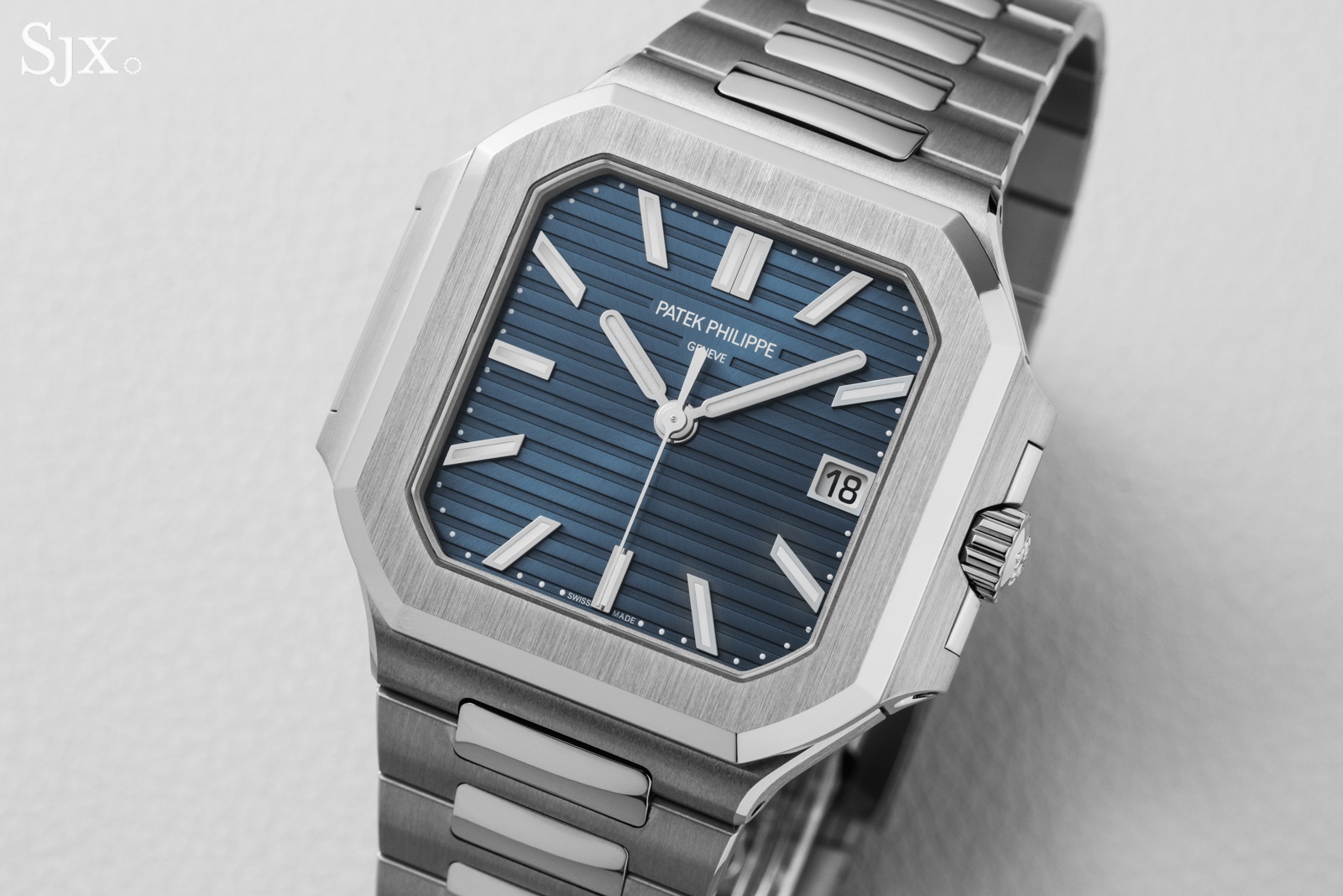
In the case of the current ref. 7128/1G-001 in 18k white gold, the influence of the Nautilus is most clearly seen in the horizontally embossed sunburst blue dial, lozenge-shaped hands, and the tapered H-link bracelet, which aren’t trying very hard to feel new.
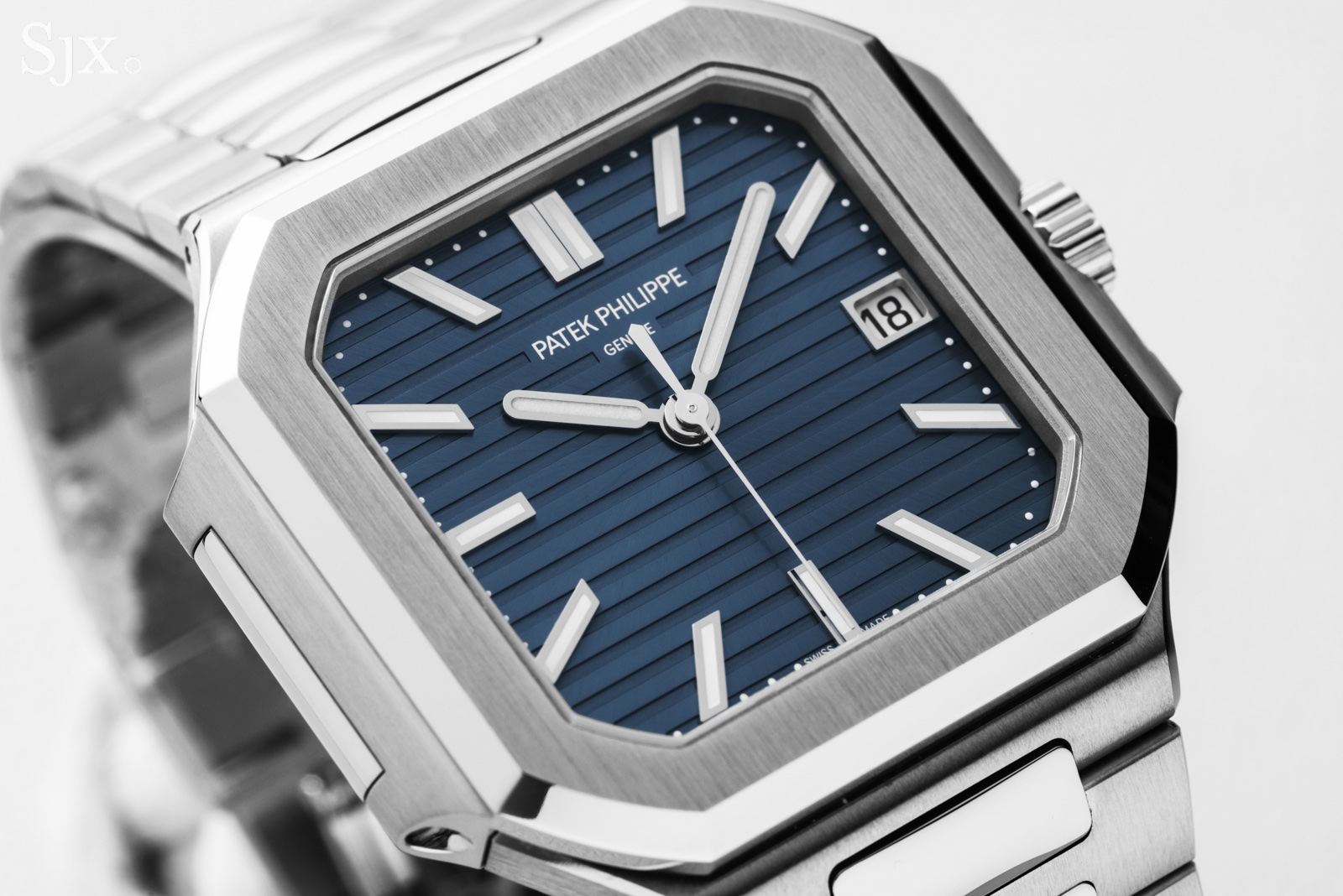
The big news here is obviously the smaller 40 mm case, which should feel just right on most wrists. This sizing addresses one of the primary concerns about the ref. 5821/1A launched last year, which was that its 45 mm size was just too big for the design. I tend to agree, which is why I was excited to experience the medium size on the wrist.
At just 8.5 mm thick, the Cubitus is 0.3 mm thicker than the Nautilus ref. 5811/1G-001, but this difference is barely noticeable and it still drapes on the wrist like an elegant sport watch should thanks to its low center of gravity and supple bracelet.
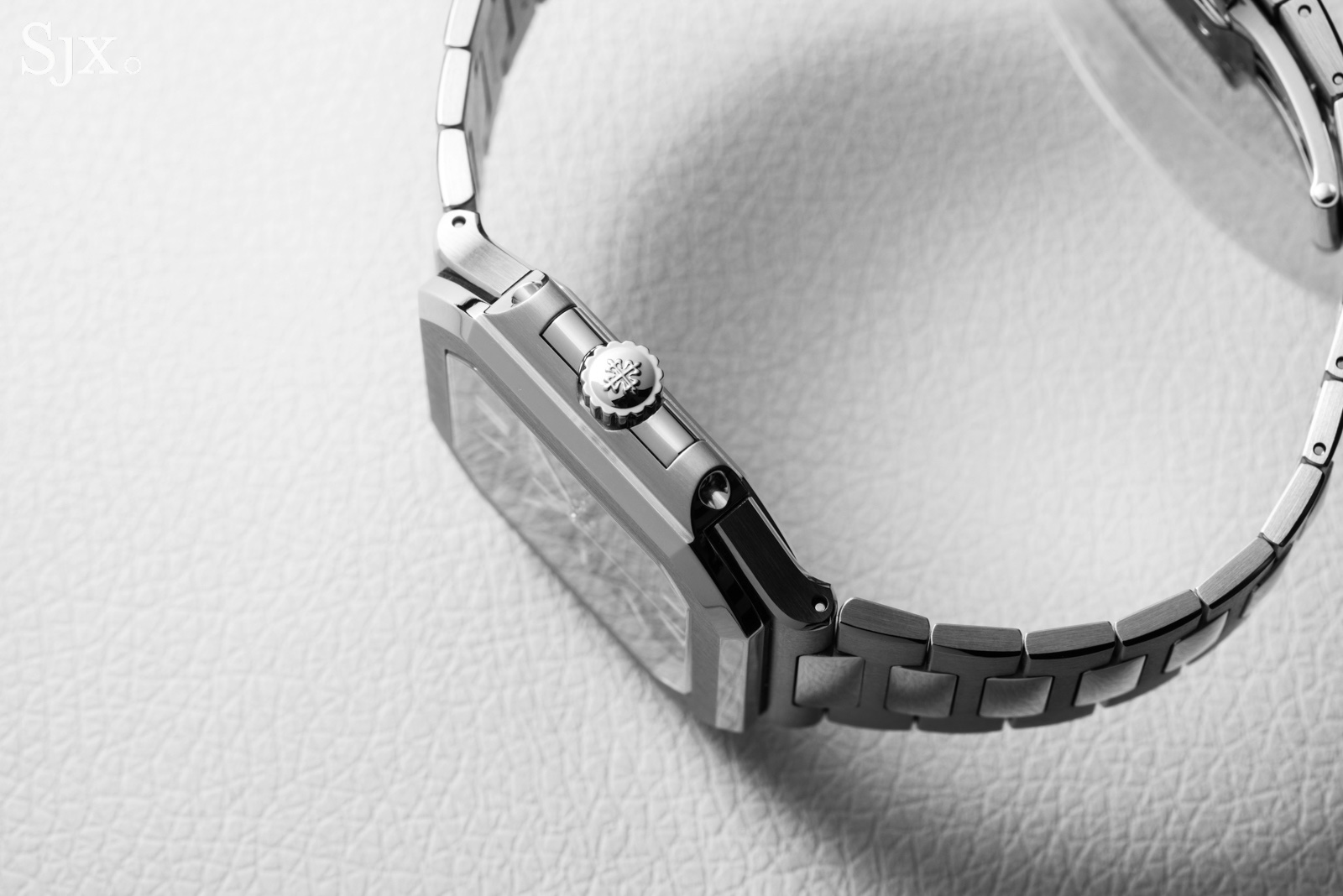
The Cubitus is powered by the well-known automatic cal. 26-330 S C, which has served as the brand’s bread-and-butter full-rotor automatic movement since its introduction in 2019.
The movement is appealingly slim and ticks at 4 Hz, an appropriate rate for a sporty watch, but suffers from an underwhelming 45-hour power reserve. This weakness aside, it’s an attractive and accurate movement perfectly suited to a slim, sporty watch like the Cubitus.
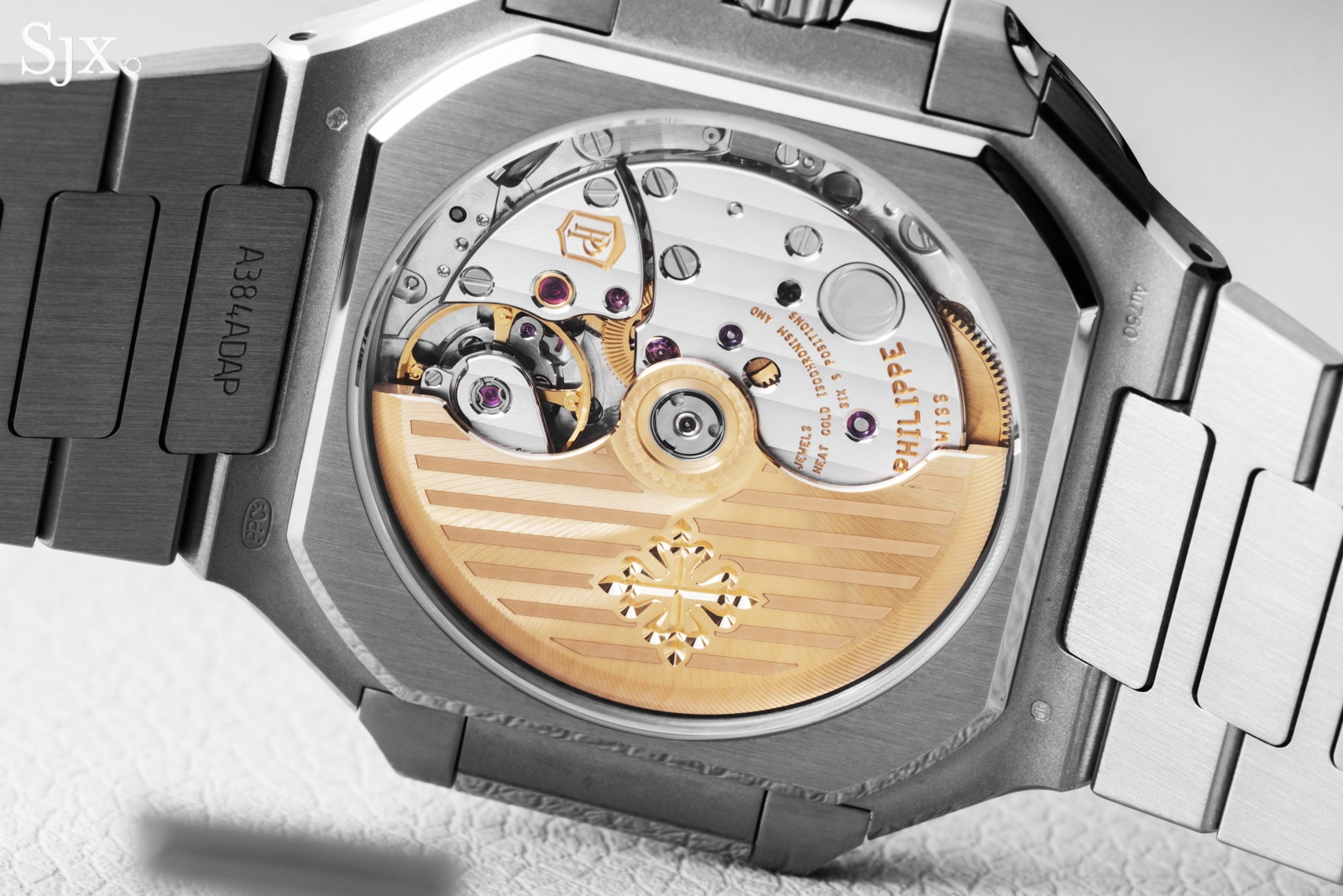
The cal. 26-330 S C’s 21k gold winding rotor is embossed with horizontal stripes and a subtle sunburst finish that matches the dial.
With an MSRP of about US$80,000, the Cubitus is priced at a premium relative to its functional equivalents from Audemars Piguet and Vacheron Constantin. This is understandable given the evident quality of the watch and the evergreen strength of the Patek Philippe brand, but it will require a robust secondary market to feel like much of a value proposition.
A design that hinges on the bezel
With so many traits in common with the Nautilus, the identity of the Cubitus hinges on its squarish bezel and faceted crystal. Fortunately, these features are beautifully rendered, with impressively sharp transitions between brushed and polished surfaces, and crisp edges at each corner.
The resemblance is probably incidental, but the octagonal shape of bezel and crystal reminds me of the shape of Place Vendôme, the location of the Patek Philippe boutique in Paris.
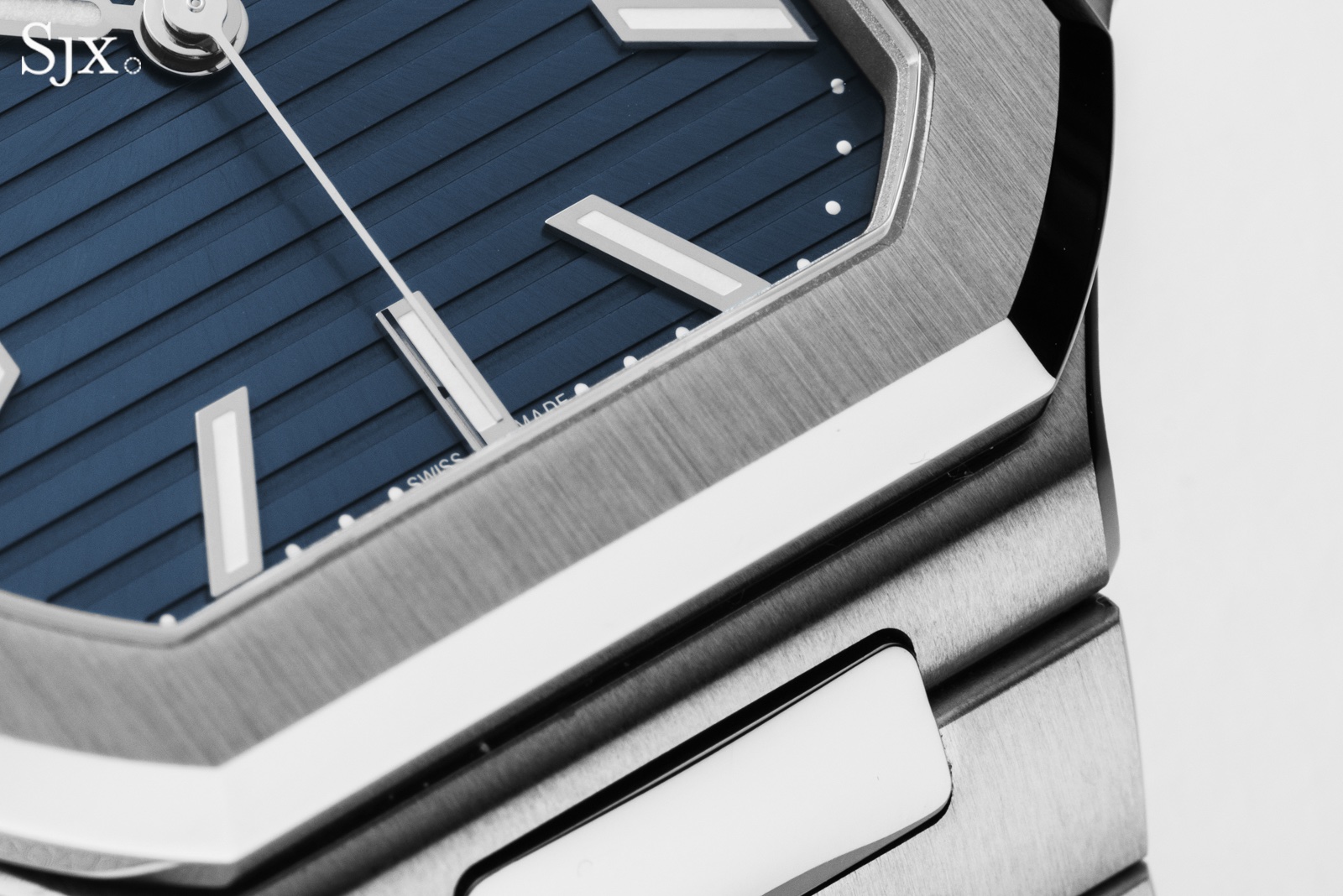
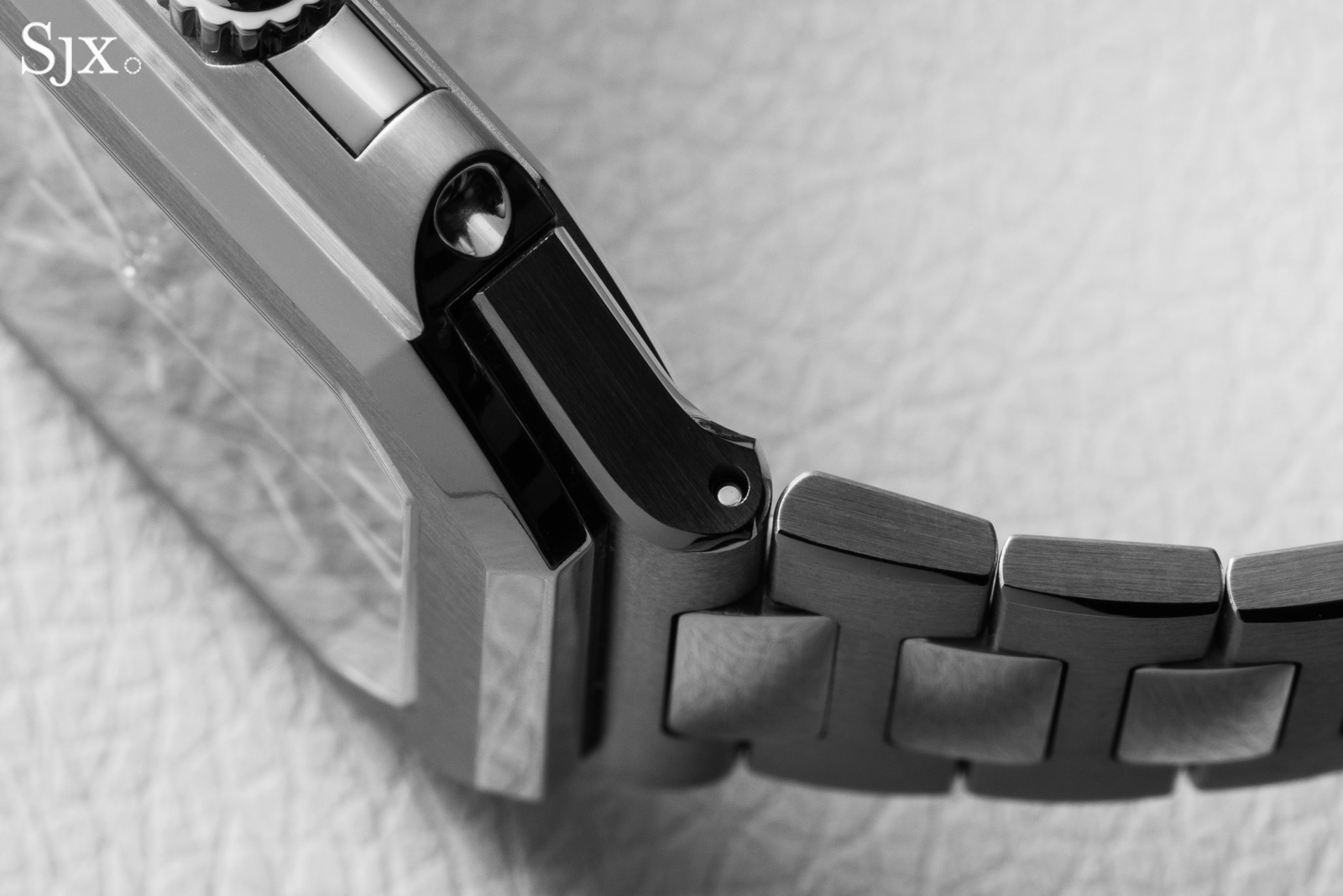
That said, the brand’s decision to retain the signature hinged ‘ears’ of the Nautilus surprised me. The new octagonal shape is distinctly less porthole-like in its appearance, so the hinged design doesn’t feel necessary; a less familiar construction might have helped the design feel more fresh.
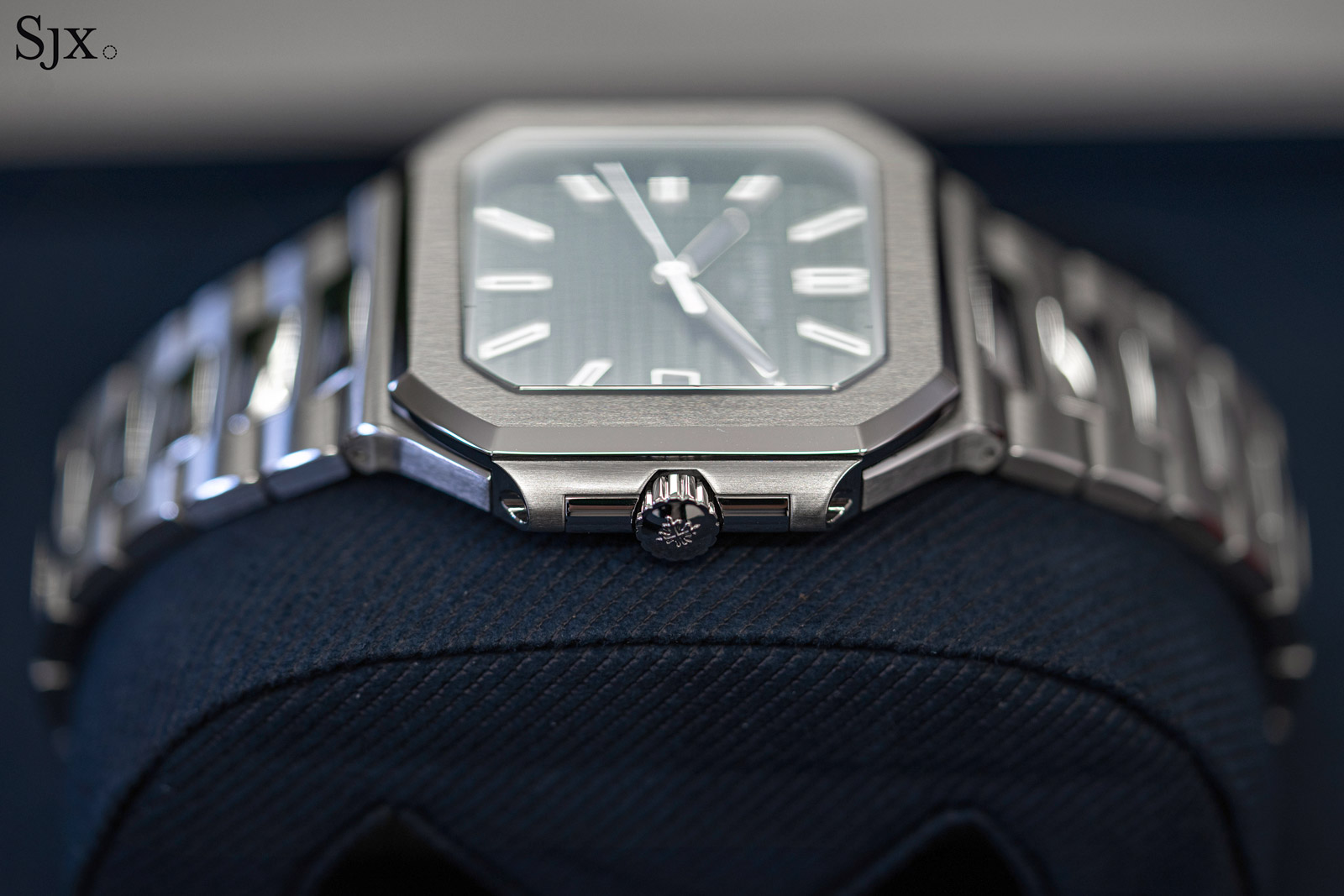
The hinged ‘ears’ seen here on the larger 45 mm Cubitus ref. 5821/1A-001 introduced last year.
The Nautilus in gold always felt great on the wrist, and the Cubitus is no different, especially in this new 40 mm size. The case is quite thin at 8.5 mm, but it feels thinner because of its low center of gravity; the ‘ears’ on either side of the case keep most of the bulk close to the wrist.
The heavier the watch, especially a watch on a bracelet, the more important it becomes to find a perfect fit. The Cubitus makes this pretty easy thanks to its micro-adjust clasp, first seen on the larger Cubitus models launched last year. Like the gold Nautilus models that came before it, the bracelet is thin, heavy, and silky.
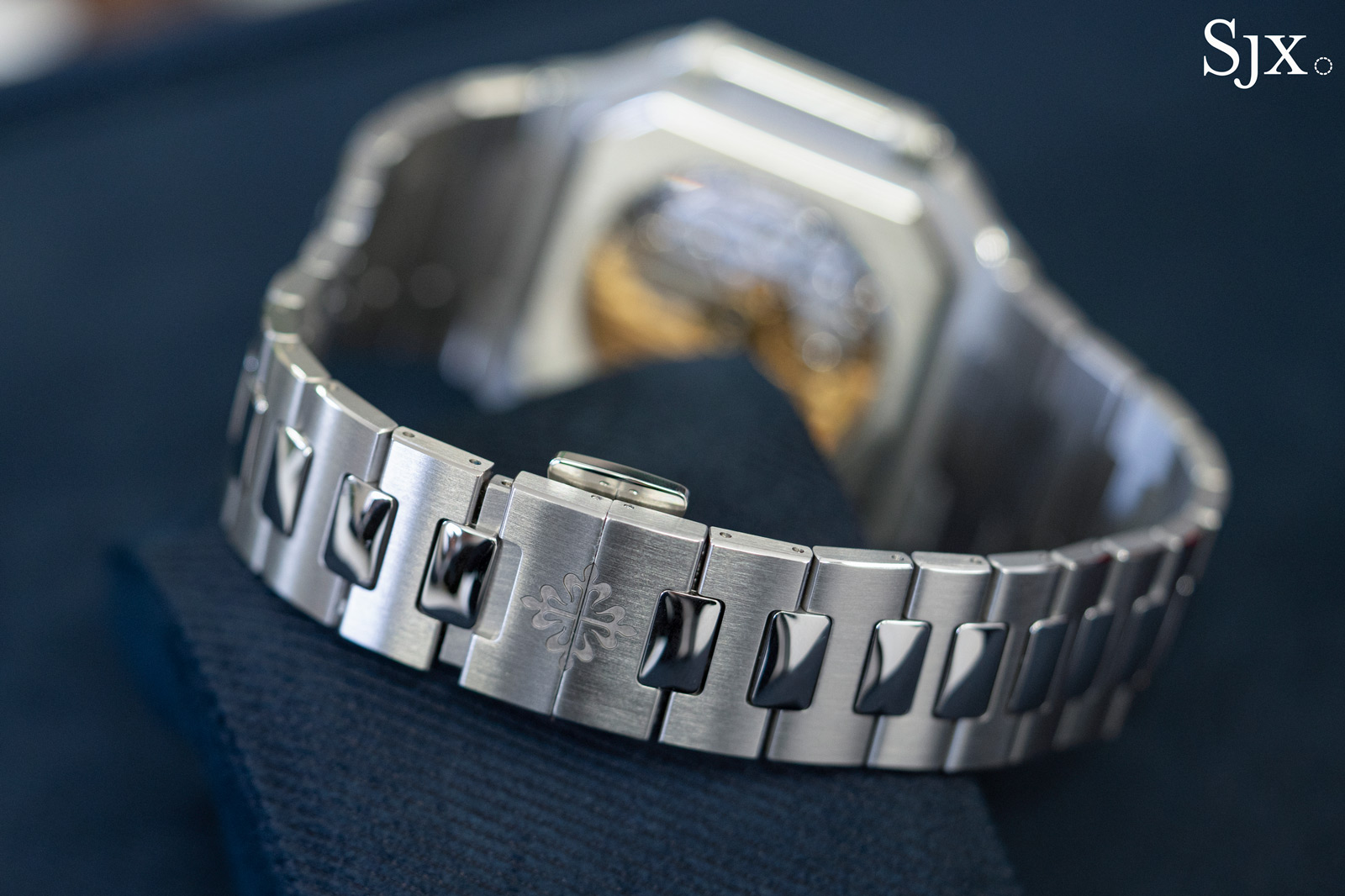
Visually, however, the bracelet looks too much like that of a Nautilus. This isn’t necessarily a bad thing, since Gerald Genta’s original design has always ranked among the best-looking designs in the industry, but it arguably prevents the Cubitus from having an identity distinct from that of the Nautilus.
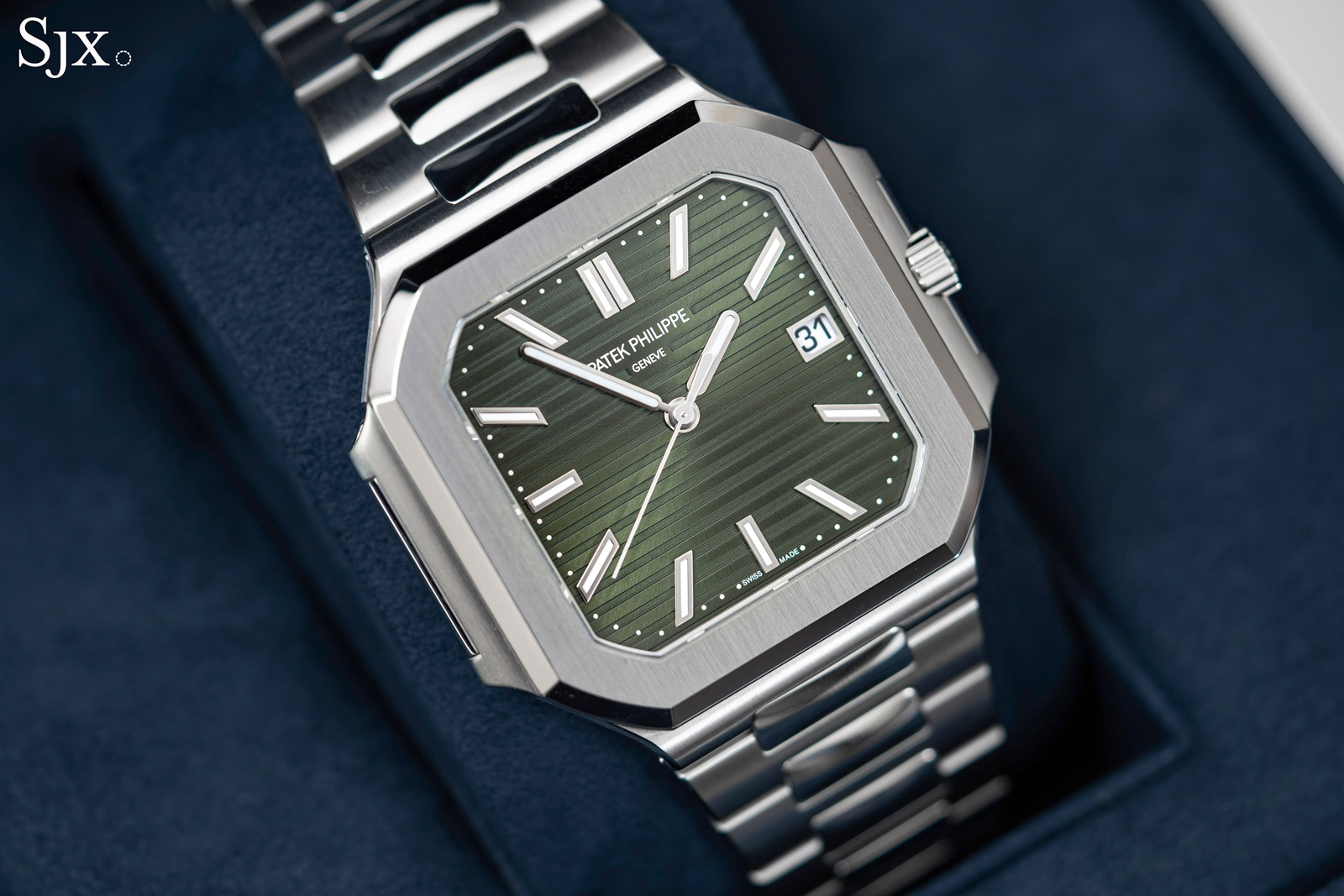
The 45 mm Cubitus ref. 5821/1A-001.
Another polarising aspect of the Cubitus is its 30 m water resistance rating, which popular wisdom suggests is too little for a watch with sporty aspirations. There’s been confusion about this point since Patek Philippe adopted new unified water resistance criteria. In essence, the brand’s new policy indicates that users should feel confident taking their watches down to the stated depth.
I’d personally have no qualms taking a well-maintained Cubitus in the water, given it shares its case construction and screw-down crown with the Nautilus which, until the change in the rating system, was rated to 120 m.
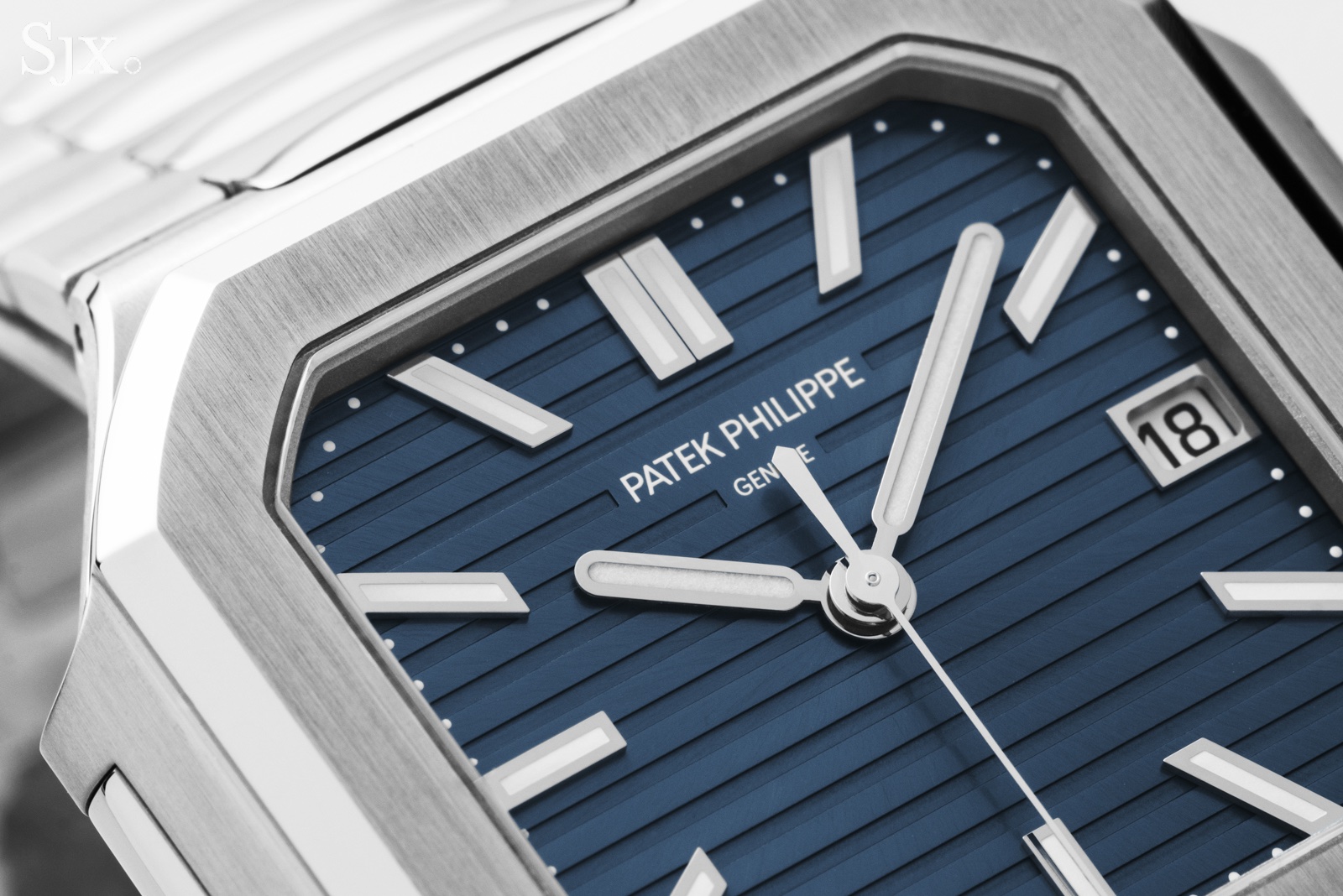
A familiar but worthy movement
When the Cubitus was initially launched, some were disappointed to learn it would be powered by the cal. 26-330 S C, the same movement used in the Nautilus. This was seen as yet another detail preventing the Cubitus from having its own identity. I understand the sentiment, but not the disappointment, because movements like the cal. 26-330 S C don’t come around all the time.
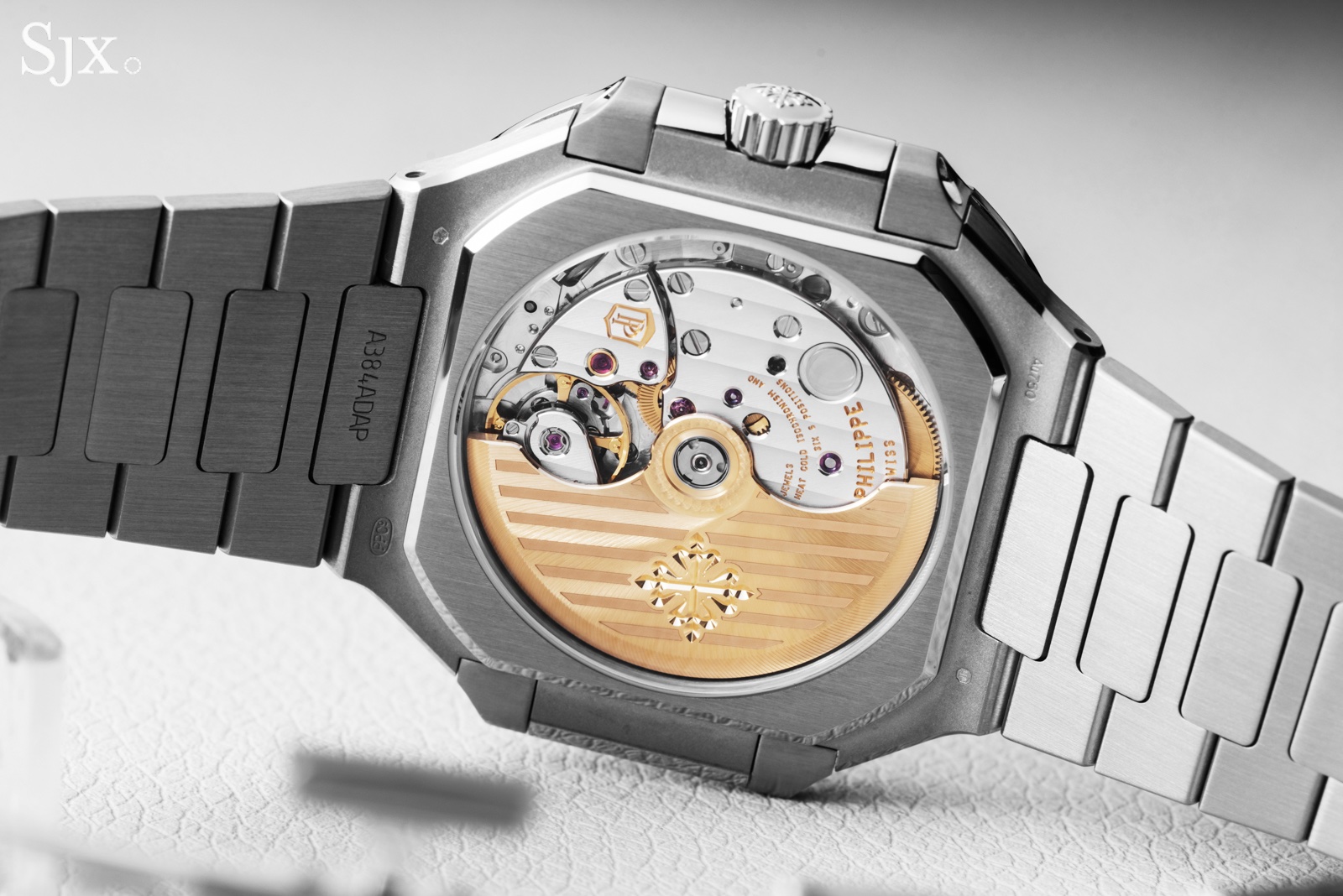
The cal. 26-330 S C is essentially an upgraded cal. 324, Patek Philippe’s mainstay automatic since 2004. The new cal. 26-330 S C debuted in 2019 and introduced some welcome technical upgrades including anti-backlash gearing for the indirect center seconds hand and a stop-seconds function.
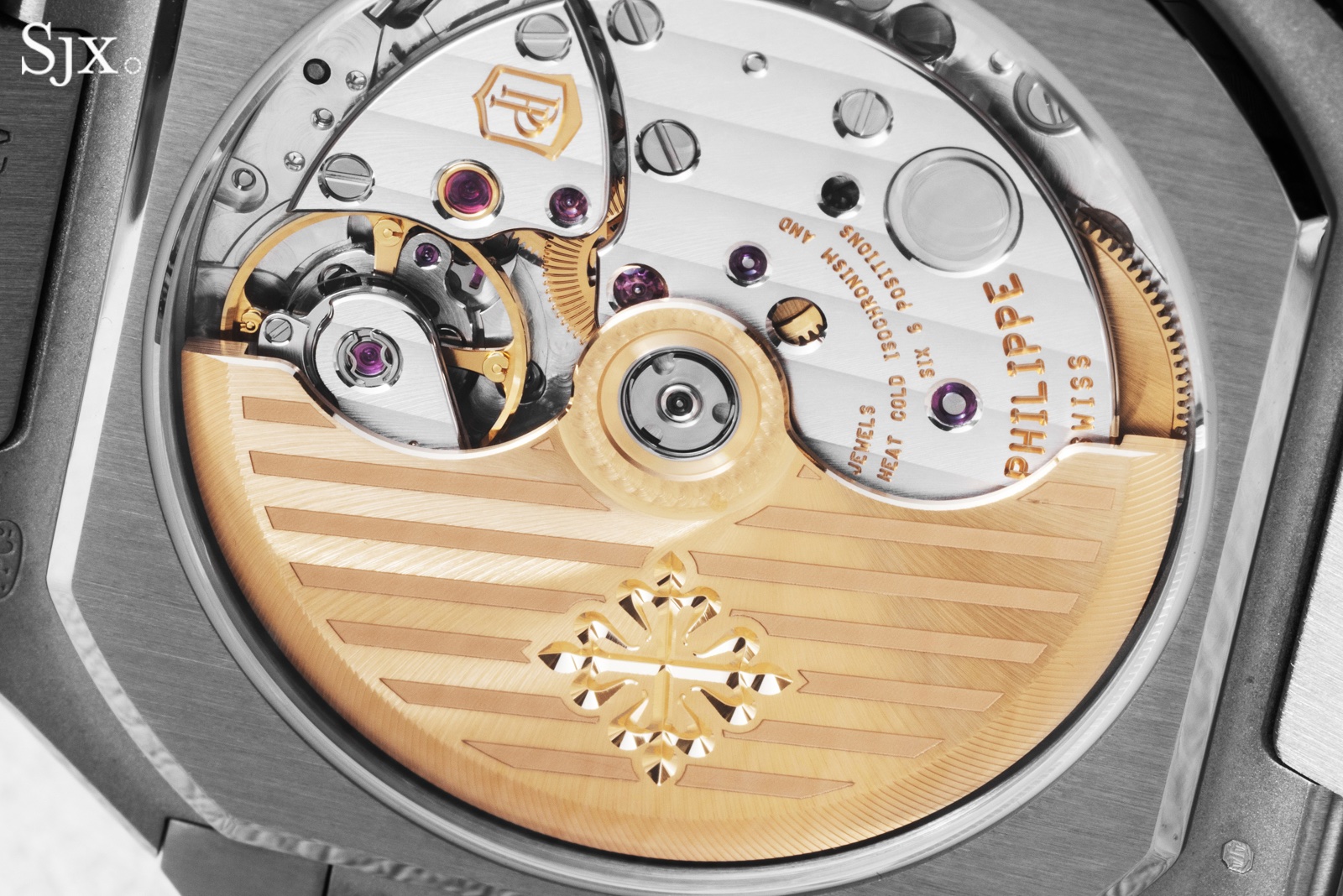
One of the great things about this movement is its slimness. In fact, at 3.32 mm, it’s just a few tenths of a millimeter thicker than the famed Jaeger-LeCoultre cal. 920 (also known as the Audemars Piguet cal. 2121), which has held the title of being the thinnest full-rotor automatic in the world for more than 50 years. This slimness makes the relatively short 45-hour power reserve forgivable.
Like the older cal. 324, the cal. 26-330 S C features a central sweep seconds hand that is driven indirectly, meaning it is not in the main flow of power. This is a common arrangement, but it results in a common problem: the seconds pinion can wobble between the teeth of the driving wheel, resulting in a jittery seconds hand.
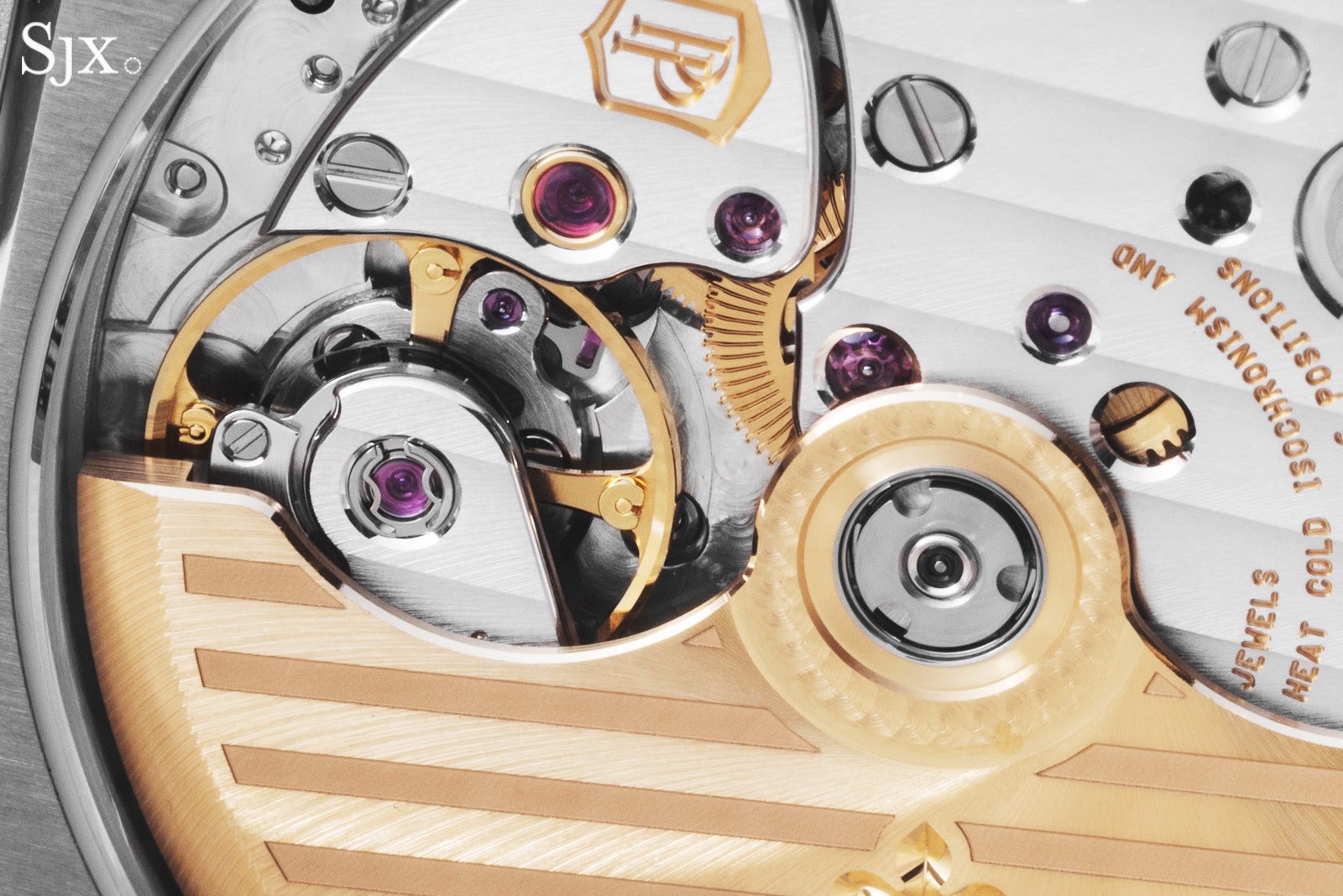
The third wheel, partially visible above, features spring-loaded teeth to help stabilise the leaves of the seconds pinion, eliminating the need for a tension spring.
The common solution is a thin copper alloy spring that rides on the seconds pinion, but this creates unwanted friction. With the cal. 26-330 S C, Patek Philippe used an additive manufacturing process called LIGA to fabricate the third wheel with blade-like spring-loaded teeth that squeeze the lobes of the seconds pinion at all times, ensuring perfectly smooth rotation.
Rolex uses the same solution for the cal. 4130 and cal. 4131 chronograph movements used in the Daytona. Like Rolex, Patek Philippe has a penchant for integrating new technology into legacy platforms, rather than developing all new movements every few years.
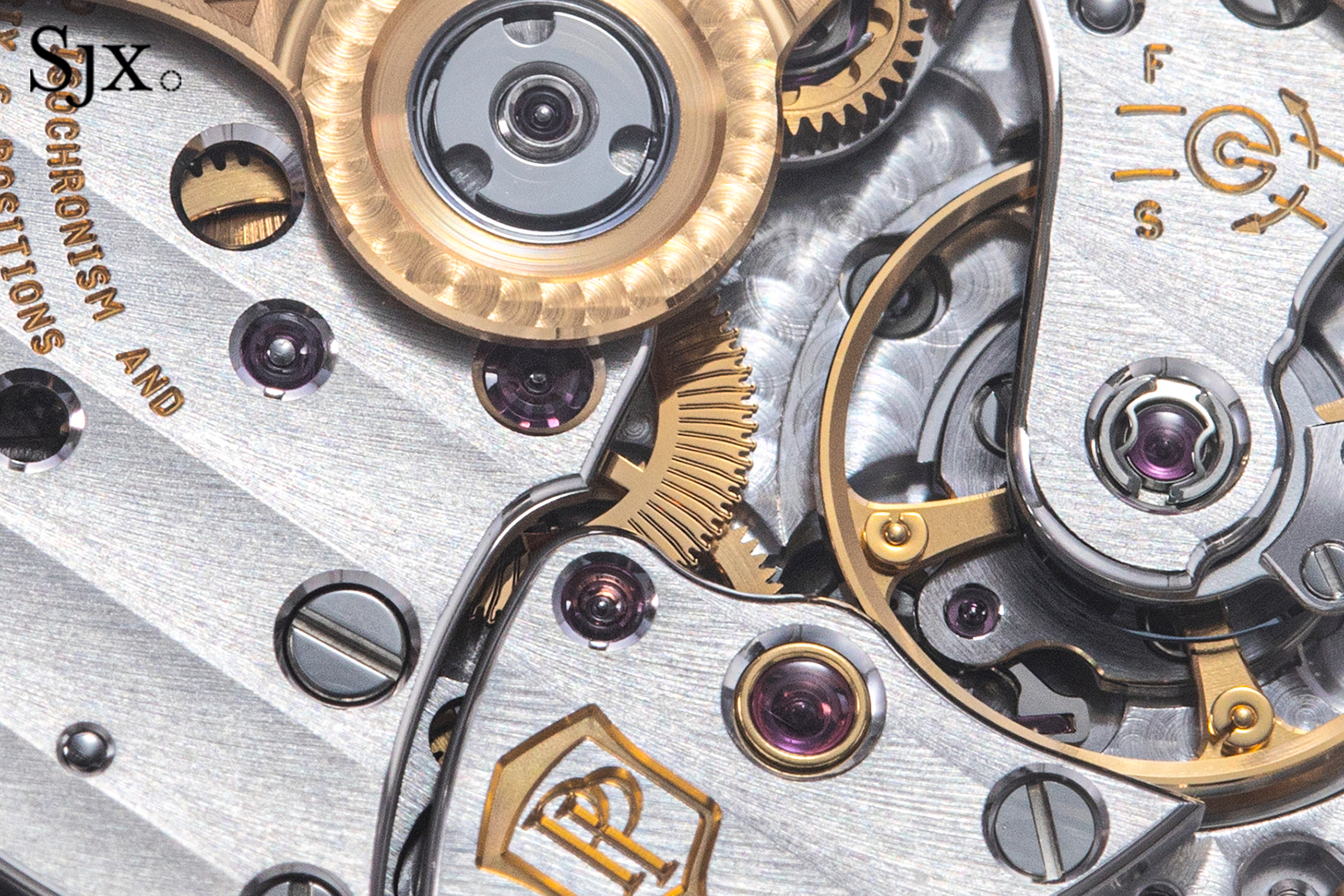
The cal. 26-330 is used in several entry level Patek Philippe models including the Aquanaut, Nautilus, and Calatrava, which means annual production is likely in the tens of thousands. This volume necessitates a degree of automation when it comes to finishing, but there appear to be several hand-finished details that elevate it above most of the competition in the industrial haute horlogerie segment.
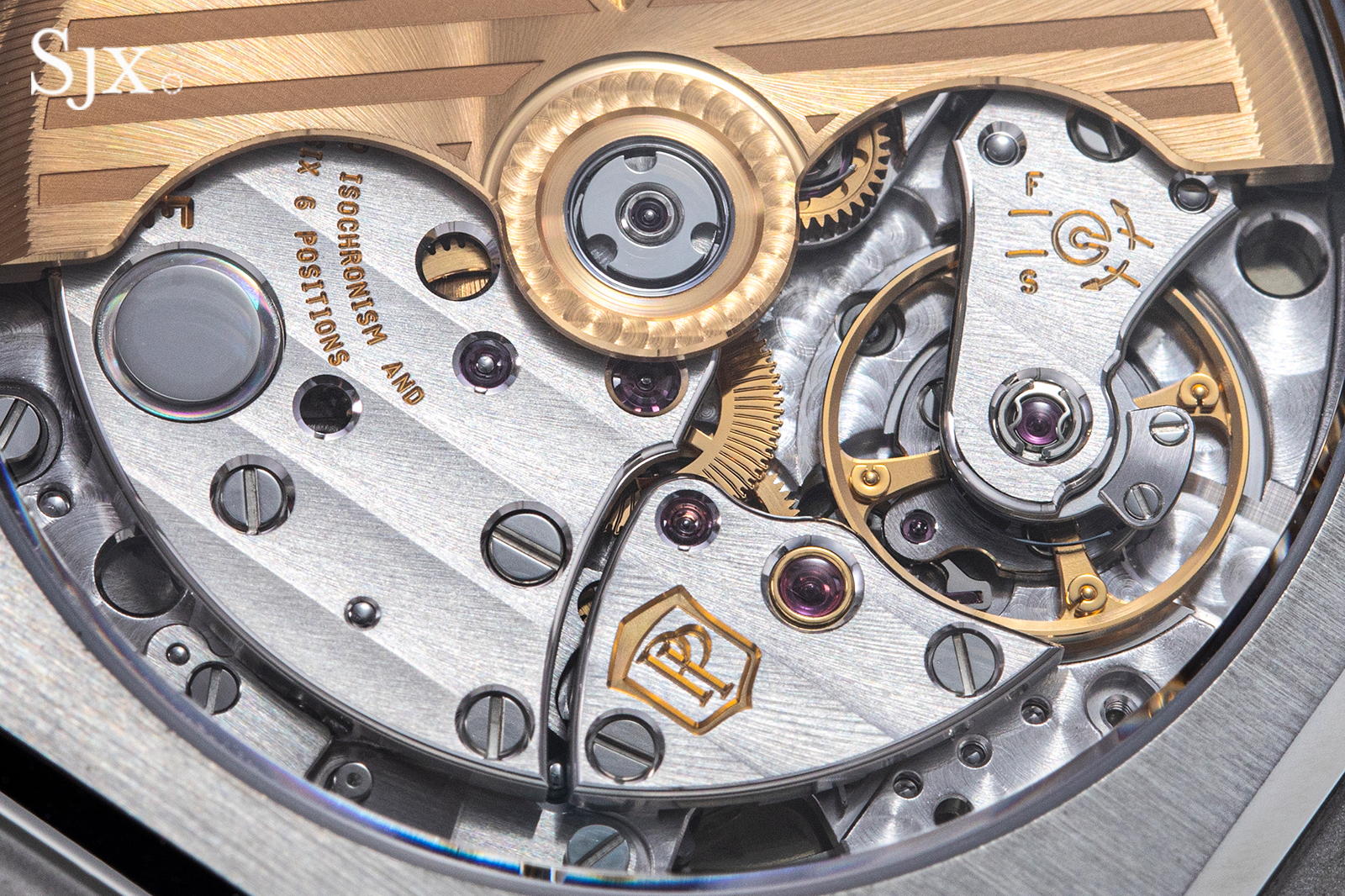
I’ve said it before, but I’m still impressed by how good these movements look up close considering how many are made. In particular, there are several outward angles with crisp corners, and the screw heads and countersinks are polished brilliantly.
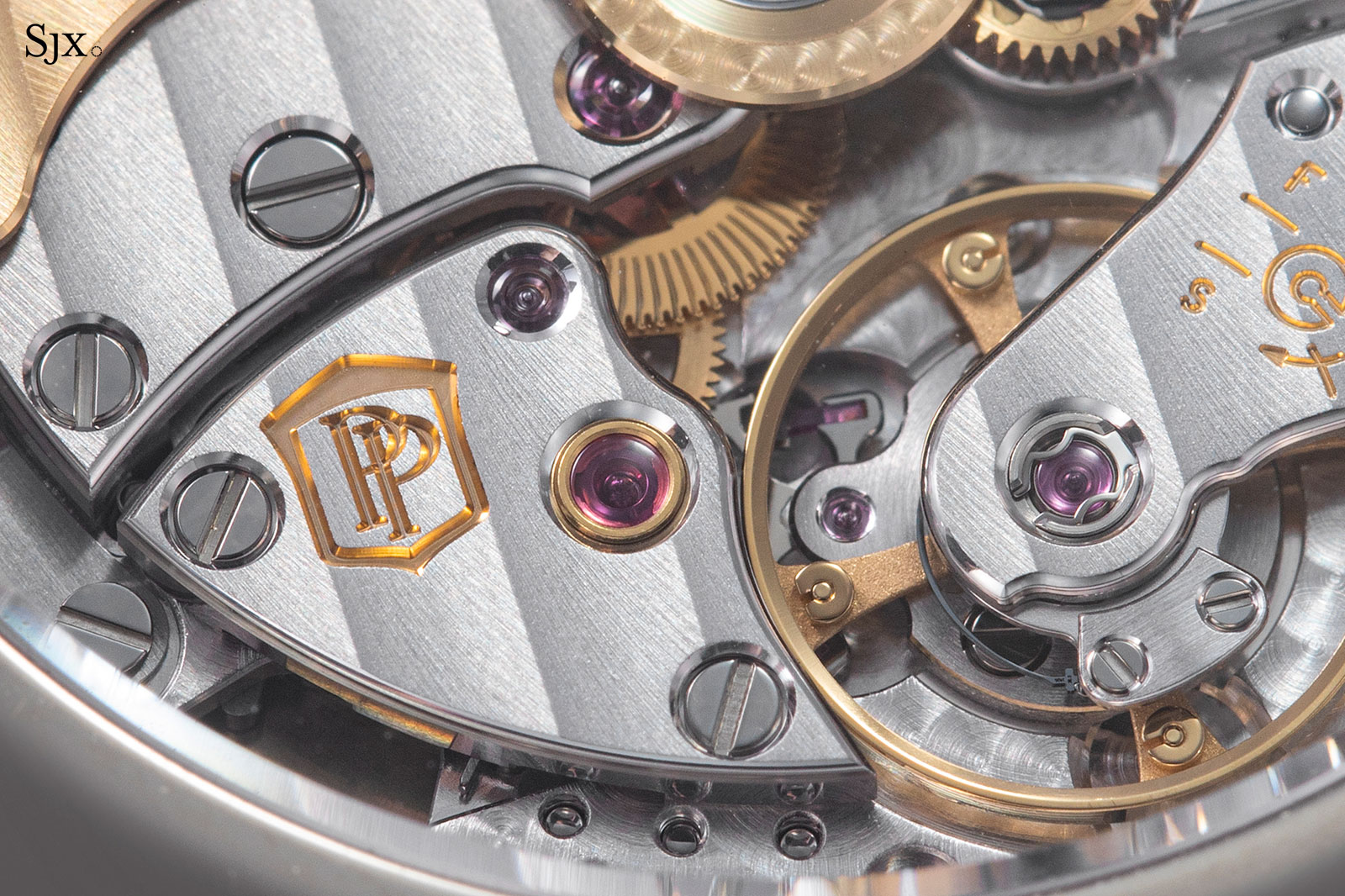
The cal. 26-330 S C
And its beauty is more than skin deep. Patek Philippe has not forgotten that a wristwatch is ultimately a timekeeping instrument, and thanks primarily to the silicon Spiromax hairspring, the cal. 26-330 S C is rated to run between -1 and +2 seconds per day.
Taken together, the slim construction, tidy finishing, and best-in-class chronometric performance make the cal. 26-330 S C a worthy engine for the Cubitus, despite its short power reserve and ubiquity throughout the brand’s catalogue.
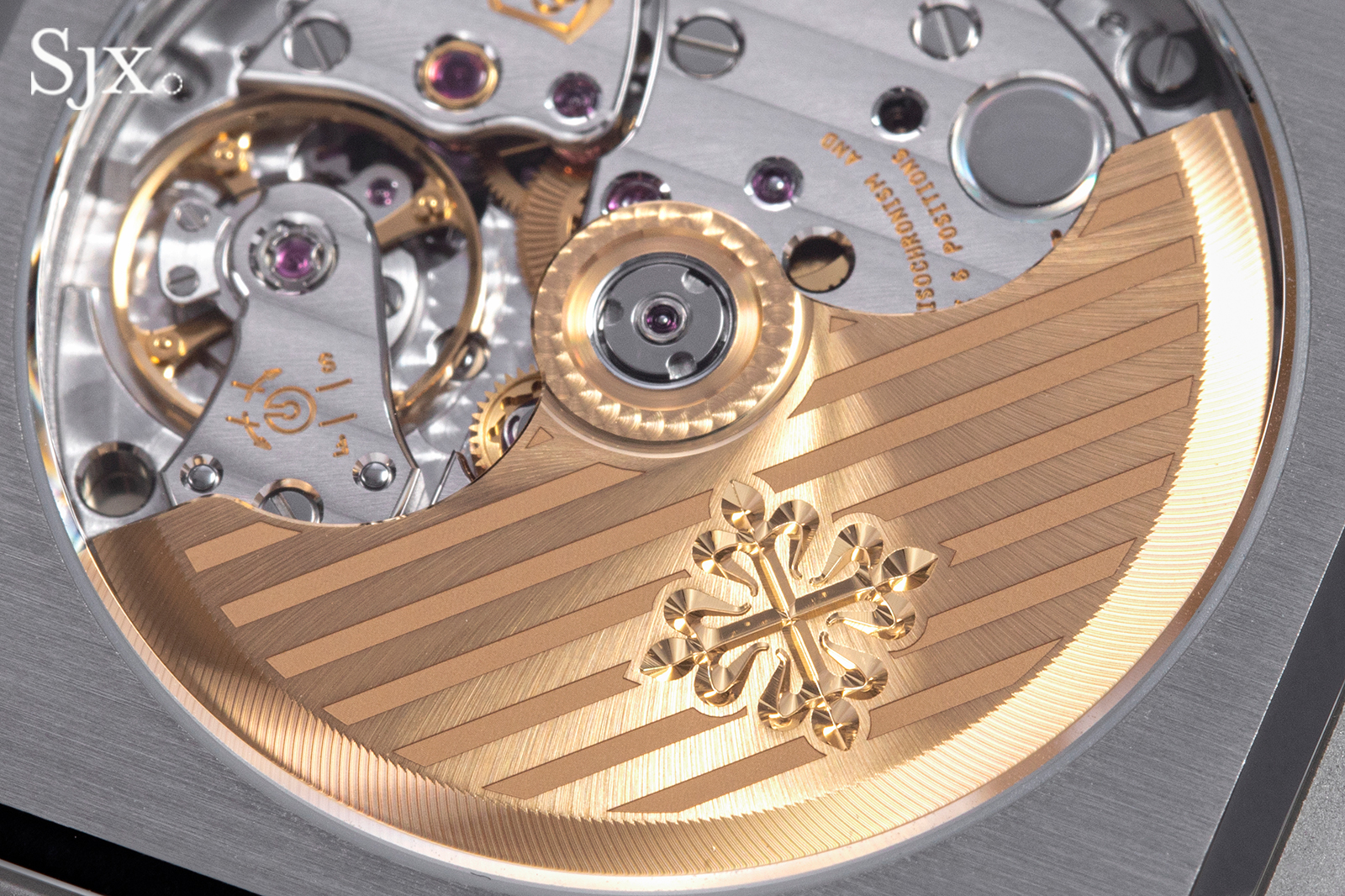
Closing thoughts
Considered on its own, the Cubitus ref. 7128/1G-001 is an objectively well made watch that feels poised on the wrist. Fit and finish are exemplary, and the critical details, namely the faceted edges of the bezel and crystal, are impressively executed. It’s true that the movement isn’t groundbreaking, but aside from its power reserve it leaves little to be desired.
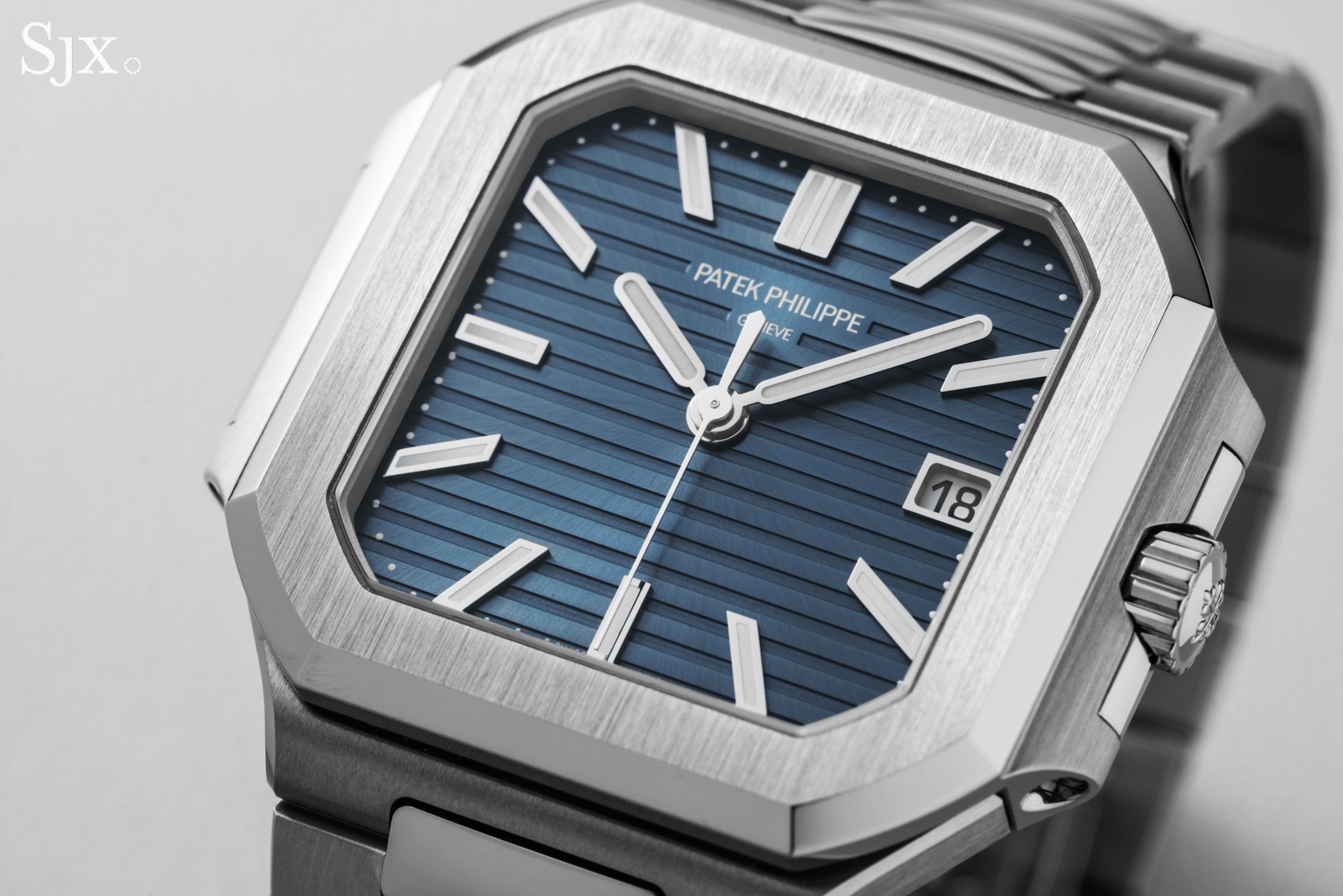
The overt similarity to the Nautilus is arguably a weakness, but the Cubitus, especially in this new 40 mm size, is quite convincing on the wrist. Time will tell, but it seems inevitable that the Cubitus will only become more popular as collectors experience these watches and get used to their presence in the collection. But if not, it may follow the path of the the short-lived Vacheron Constantin ref. 46004, the similarly shaped square sibling of the recently reborn 222, and become sought-after by future collectors looking for something a little bit different.
Key facts and price
Patek Philippe Cubitus
Ref. 7128/1G-001
Diameter: 40 mm
Height: 8.5 mm
Material: 18k white gold
Crystal: Sapphire
Water resistance: 30 m
Movement: Cal. 26-330 S C
Functions: Hours, minutes, and seconds
Frequency: 28,800 beats per hour (4 Hz)
Winding: Automatic
Power reserve: 45 hours
Strap: Bracelet with micro-adjustment clasp
Limited edition: No
Availability: Now at Patek Philippe retailers and boutiques
Price: US$80,346 excluding taxes
For more, visit patek.com.
Back to top.